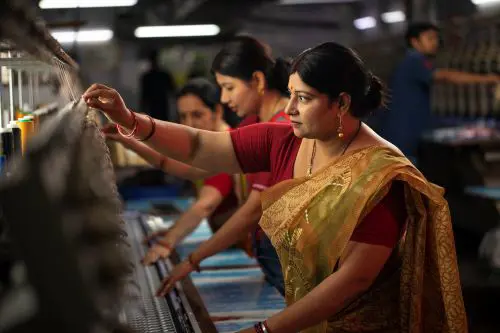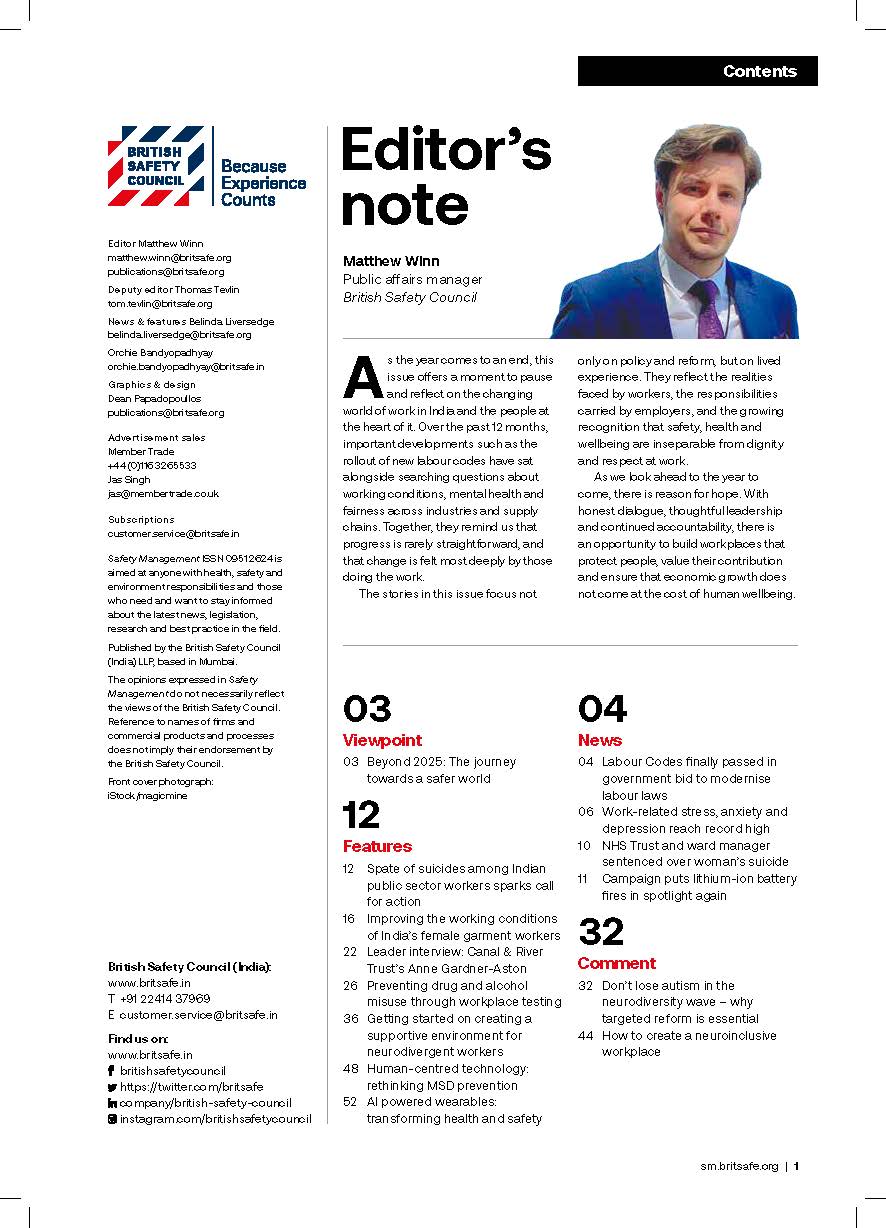The latest in a long series of fatal explosions at India’s firework factories has prompted calls from trade unions and politicians for much more vigorous enforcement of fire safety rules by local fire authorities.
Features
Firecracker factories: an explosive mix
It’s not just during the festival of Diwali that millions of people in India set off firecrackers. Firecrackers are a common thing nowadays; in fact, any celebration – from weddings to birthdays to even Valentine’s Day – is now incomplete without people setting off firecrackers. Furthermore, during special events like cricket matches, fans at stadia across the country love to watch the grand spectacle of colourful fireworks lighting up the sky. And, during New Year’s Eve, fireworks are the big scene stealer, with many city dwellers launching an impressive barrage of fireworks off the roofs of their buildings, making the night sky look wonderfully alluring.
It almost seems that bursting firecrackers has become a traditional way for people in India to demonstrate their happiness. Everyone loves the stunning visions and colours in the sky, and the bangs and fizzes firecrackers create.
However, the same fireworks which are a source of fascination for millions, are frequently the cause of injuries, fatalities and health hazards for the labourers who work in a firecracker manufacturing sector plagued by negligence, violation of the rules and human error. People who work in the firecracker manufacturing units are aware of the danger it poses to their safety, but they say they have no option due to a pressing need to earn a living. The firecracker factory workers say it is now a way of life for them and they often find themselves navigating a tumultuous landscape of risks, economic challenges and the lingering aftermath of a global pandemic.

Photograph: iStock, credit frhuynh
Serious incidents
In the latest in a long series of serious and often fatal incidents in the firecracker manufacturing industry, February saw three major fatal fires and explosions at fireworks manufacturing units in three different states.
On 26 February, seven people died and seven others were injured in an explosion at a firecracker factory in Uttar Pradesh’s Kaushambi district. According to police officials, the cracker factory was owned by a man called Shahid and he, too, was killed in the blast along with six others. Officials added that it appeared that the explosion occurred following a fire in the area where chemicals were stored.
According to local residents, the blast was so powerful that it dismembered the limbs of the deceased and several of the fatally injured workers were thrown several metres away from the site.
The cracker factory was legal and had all the necessary approvals from the local government administration, according to local officials.
However, investigations show that in many of the fire and explosion incidents at cracker manufacturing units, a major contributing factor is the lackadaisical approach of the factory owners towards meeting the necessary safety standards. Indeed, the two other major incidents in February – fatal explosions at a firecracker factory in Madhya Pradesh’s Harda district on 6 February and a cracker manufacturing unit in Tamil Nadu’s Virudhunagar district on 17 February – appear to be further examples of owners brazenly ignoring basic safety requirements, according to initial official investigative findings reported in the media.
Harda incident
The Harda incident claimed the lives of 11 workers and injured 149 others, while the Virudhnagar incident left 10 dead and several others injured. Labourers at the Harda factory stated there were no safety precautions in place and the unit did not even have a fire extinguisher, according to media reports. During an inspection conducted by the district administration in September 2023, irregularities such as the storage of explosives above the permitted limit and absence of proper water tanks were found at the factory, according to a report in the Hindustan Times.
The official inspection report also stated that the factory had flouted several rules under the Explosives Act 2008 and operations should be stopped immediately to prevent any loss of life, according to media reports.
Harda’s additional district magistrate Nagarjuna Gowda said the factory had been “sealed” (ordered to close) once in the past, while police officials said the factory had four licences, one of which had expired at the time of the 6 February tragedy. “Two of the licences were issued by the central government and two by the state government… Cases had been registered against the factory in 2015 and 2018 as well. We are looking into those allegations,” police officials told the Indian Express.
According to the First Information Report (FIR) drawn up by local police, the fire was likely caused by “illegal possession of an excessive quantity of explosives” at Rajesh Fireworks. The factory owners – Rajesh Agrawal and Somesh Agrawal – as well as a factory supervisor namely Rafiq – were arrested later on the day of the fire.
According to media reports, the factory included a wholesale shop, which meant a large stock of firecrackers were stored on-site. “This factory had violations in the past and its licence was suspended,” additional district magistrate Nagarjuna Gowda told the Indian Express. “We are suspecting that the factory had stocked firecrackers over the prescribed limit.”
A local police inspector also told the newspaper that police were looking into whether the factory owners had violated laws designed to ensure the safety of firework manufacturing units.
Political row
The Harda fire incident also took a political turn, with national, state and local general elections only a few months away. The main opposition Congress Party criticised the ruling BJP Party in Madhya Pradesh during a debate on the winter interim budget at the state’s Parliament in the capital city of Bhopal.
“Though there is no official record of the number of registered workers in the (Harda) factory, my team has estimated that at least 600–700 workers used to work there,” stated Ram Kishore Dogne, a Congress Party MLA from Harda. “12 deaths have been reported while at least 224 are injured. Where are the rest of the workers?”
Meanwhile, the All India Trinamool Congress (AITC) Party, led by Mamata Banerjee, current chief minister of West Bengal state, claimed on X (formerly known as Twitter): “Despite past fatalities, the politically-privileged owners were allowed to continue with their lethal enterprise. How does the @BJP4MP administration justify this? How many more casualties will it take for them to act responsibly? Will a @NIA_India (National Investigation Agency, India) probe be initiated, or is this just another tragedy to be swept under the rug?”
Meanwhile, the Virudhnagar fire incident took place on 17 February while employees were mixing chemicals for fancy firecrackers. A senior official from the Virudyhunagar district administration told local media outlets that the blast was caused by a man-made error. “As per rules, only two people should be present in the room when chemicals are mixed,” the official said. “However, in this case it appears that all the people were either inside or in the adjoining area outside the room.”
The official added that the rules mandate that a room for manufacturing crackers must have four doors and employ four people, and only two persons are allowed to work in the mixing room at once. Also, the factories must install copper plates at the entrances so that workers can discharge any static energy from the human body that could trigger an explosion.
The tragedy happened at a factory located in Ramuthevanpatti in Virudhnagar, a region notorious for similar accidents.
For instance, in October 2023 (a few weeks before Diwali), 14 workers were killed and two injured in two separate fires at firework units in Rangapalayam and Kichanayakanpatti in Virudhnagar district.
According to police officials, at Rengapalayam, the Kanishkar fireworks unit featured a shop located close to the factory and while workers were testing firecrackers a spark led to a major explosion killing at least 13 employees. In the other incident, which took place at the Aarya firecracker unit in Kichanayakanpatti, a 56-year-old worker, named in the media as Vembu, died while mixing chemicals.
Tamil Nadu promises enforcement action
Following the October 2023 incidents, Tamil Nadu ministers C V Ganesan and Thangam Thennarasu announced that a meeting would be convened to identify the causes of the incidents. They also warned that stringent action would be taken against firework manufacturing companies that fail to follow the necessary safety guidelines.
However, less than six months later a further 10 workers lost their lives in the Virudhnagar firecracker factory fire on 17 February due to factory owners alleging ignoring basic safety requirements.
The Virudhunagar Centre for Indian Trade Unions (CITU) district secretary PN Deva said in a statement that officials should inspect firework units and ensure that safety features and precautions are not being compromised. “Without inspections, certificates were issued. This has led to loss of lives,” he said, while urging Tamil Nadu’s chief minister Muthuvel Karunanidhi (M.K.) Stalin to directly intervene.
Deva added that it was common to witness workers sitting on the floors of firework units, working without gloves and masks, and with their hands and faces coated with explosive powders.
“Apart from the restriction on number of workers, the workers must be issued with masks and gloves, while the floors must have rubber mats,” he said. “The concerned officials are instructed to hold frequent inspections to ensure such practices are followed by factory owners, but the orders are never followed.”
Fire safety rules ignored
Although it is mandatory for water tanks and fire extinguishers to be provided in firecracker units for fire-fighting purposes these rules are often ignored by factory owners. The Petroleum and Explosive Safety Organisation (PESO) sub-circle office – which is responsible for carrying out fire and explosive safety inspections at firework plants – refrains from doing so, the trade unions alleged.
Incidentally, Virudhunagar, along with Sivakasi, another city in Tamil Nadu, is the country’s cracker manufacturing hub, meeting almost 90 per cent of India’s demand, with over 1,000 factories producing firecrackers.
During the recent Ram Mandir ‘pran-pratistha’, or consecration ceremony of the Hindu Shree Ram Janmaboomi Temple in Uttar Pradesh, on 22 January, Sivakasi saw a 20–30 per cent rise in demand for firecrackers from North India alone compared to the previous year, according to industry sources.
Although the firecracker industry in Sivakasi is estimated to have an annual turnover of over Rs 4,800 crore, every year the city and region witnesses at least 10 to 20 accidents in firework plants. These mostly occur in the unorganised sector where there are inadequate safety measures in place or because the workers are not trained to handle the hazardous chemicals properly.
Also, workers making firecrackers are often paid on a piece-rate basis. This means that the more workers produce, the more they earn. And this is a major reason for accidents, as a moment’s inattentiveness can lead to an explosion.
Although the Sivakasi district administration says there have been 298 deaths in the city’s firework plants in the last decade, very little has changed since the 2012 Sivakasi factory explosion, one of the deadliest incidents at a firecracker unit, when more than 50 people were burned to death. The incident happened at the Om Sakthi Fireworks Industries fireworks factory in September 2012: Diwali was just weeks away and workers were reportedly under high pressure to manufacture more fireworks. According to factory officials, around 300 people were working in the unit at the time of the incident.
According to estimates, over 6.5 lakh families, directly and indirectly, in Sivakasi are dependent on the thriving but risky firework industry for their livelihood. Experts say that the city’s hot and dry weather makes it ideal for all-year-round firework production.
Although fireworks manufacturers often state publicly that their plants comply with safety laws and rules, the reality inside factories is often a different story, experts say. “Workers are not provided with any kind of safety gear while handling hazardous materials, resulting in numerous health issues and often very little fire safety protocols are followed inside these units,” said one commentator.
Common causes
The experts say that common causes of the fires and explosions include inadequate training of workers and supervisors involved in different stages of the production and marketing of firecrackers, overstocking of explosives, raw materials and finished fireworks on-site (which increases the risk of a fire or explosion), and employing more workers than is legally allowed for the factory.
“While many factors influence workplace safety, adopting and enforcing a safety climate that encourages safety practices, quality training, and employee input into the safety climate of the unit, could result in lower number of accidents, larger profit margins, and also create a culture of safety that is supported and sustained by employees,” said a trade union activist in Tamil Nadu.
FEATURES

The price of fast fashion is not pretty
By Orchie Bandyopadhyay on 11 December 2025
The largely female workforce in India’s garment manufacturing industry faces long hours, low wages and poor working conditions, and campaigners say it is time the Indian government and international clothing brands took tougher action to improve working conditions, pay and employment rights.

Suicide at work: a major problem in India
By Orchie Bandyopadhyay on 11 December 2025
Recent reports of suicides among workers ranging from police officers to electoral roll officials have prompted calls for employers and government agencies to do more to both reduce excessive workloads and provide better mental health support at work.



